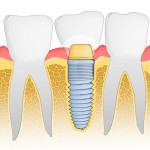
With the increasing use of dental implants to replace missing teeth there is growing interest in the management of peri-implantitis. The prevalence of peri-implantitis has been estimates at around 18.5% at a patient level and can result the severe and rapid destruction of the supporting tissues. Both surgical and non-surgical treatment approaches have been used for peri-implantitis with some studies indicating that adjunctive graft materials can improve surgical outcomes.
The aim of this review was to compare the clinical effect of surgical treatment of peri-implantitis alone or in combination with graft material.
Methods
A protocol was registered in PROSPERO. Searches were conducted in the PubMed, Embase, CINAHL, Cochrane Library, Scopus, EBSCO Dentistry & Oral Sciences Source databases as well as OpenGrey, ProQuest Dissertations & Theses Global, ClinicalTrials.gov, and the World Health Organization International Clinical Trials Registry Platforms (ICTRP). Randomised controlled trials (RCTs) involving a minimum of 10 patients undergoing surgical treatments for peri-implantitis were considered. Two reviewers independently screened and selected studies and extracted data with disagreements being revolved by a third reviewer. A single reviewer assessed risk of bias using the Cochrane risk of bias tool. The main outcomes were changes in probing depth (PD) and marginal bone level (MBL)
Results
- 5 RCTs were included
- All 5 studies used open flap debridement with or without adjunctive graft material.
- 4 different adjunctive graft materials were used.
- 3 of the 5 RCTs used postoperative systemic antibiotics.
- One study was considered to be at low risk of bias, one at high risk and 3 at unclear risk.
- Meta-analysis indicated a significantly larger improvement in MBL with use of graft material but no difference in PD (see table below).
| No of studies (Implants) | SMD (95%CI) | |
| Pocket depth | 5 (189) | 0.46 (-0.13 to 1.55) |
| Marginal bone level | 5 (189) | 1.04 (0.71 to 1.37) |
Conclusions
The authors concluded: –
It is cautiously concluded that graft materials can provide significant improvements in MBL at 12 months postoperatively but do not significantly improve PD changes. The adjunctive application of graft materials in the surgical treatment of peri-implantitis needs to be further studied in RCTs.
Comments
Previously we have looked at other reviews on the surgical treatment of peri-implantitis (Dental Elf – 27th Apr 2018, Dental Elf – 5th Jul 2017) Both of those reviews included study designs other than RCTs . Those reviews , while suggesting that surgical approaches to the management of peri-implantitis could be beneficial only included a small number of studies and the study quality was limited.
This new review had registered a protocol on PROSPERO and indicated that the authors had hoped to undertake a network meta-analysis (NMA). However as only a small number of relevant studies could be identified the NMA was not performed. The authors have undertaken extensive search strategy but only 5 studies met the inclusion criteria. The studies were also small with only one being considered to be at low risk of bias. The authors reported on a number of subgroup analyses but because of the small number of studies most only included a single study so should be interpreted very cautiously as should their overall findings. With the increasing use of dental implants more well-designed and reported trials of suitable size with longer follow-up periods should be conducted to determine the best treatment options for peri-implantitis.
Links
Primary Paper
Li ZB, Li K, Du M, Ren SB, Yu Y. Surgical treatment of peri-implantitis with or without adjunctive graft material: a systematic review and meta-analysis of randomized controlled trials. Int J Oral Maxillofac Surg. 2022 Jun 15:S0901-5027(22)00216-8. doi: 10.1016/j.ijom.2022.05.007. Epub ahead of print. PMID: 35717280.
Other references
Dental Elf – 27th Apr 2018
Dental Elf – 5th Jul 2017
Peri-implantitis: lack of high quality studies for surgical regenerative treatment
Dental Elf – 6th Sep 2019
Peri-implant disease: Does supportive periodontal treatment improve implant survival?
